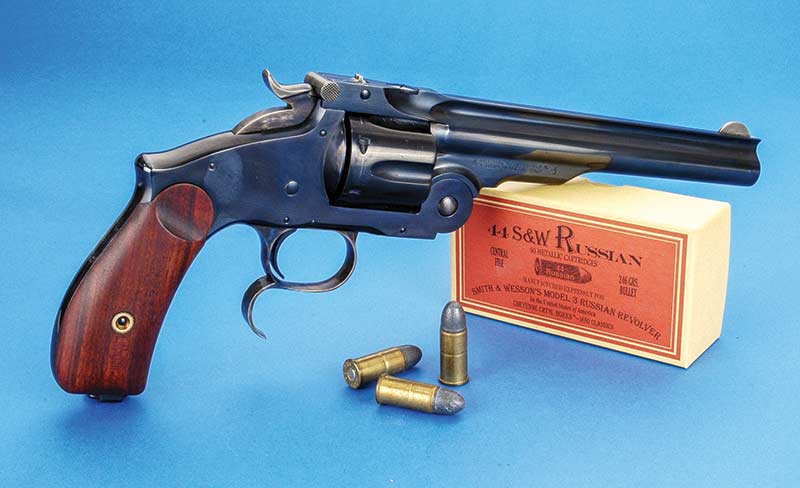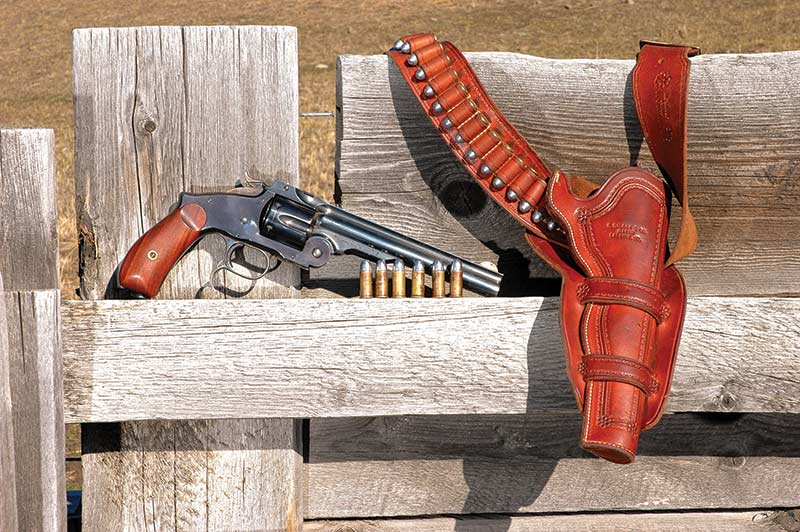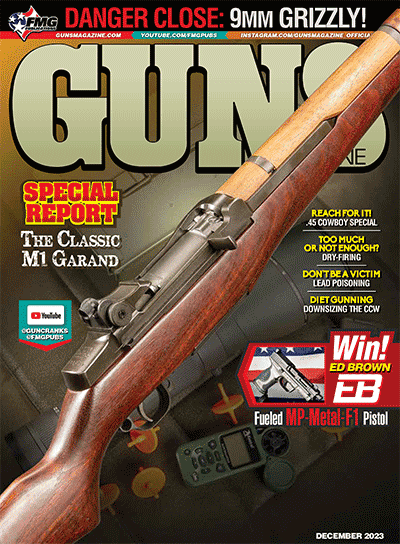The .44 Russian
My Favorite Replica
My first sixgun replica was purchased in September, 1970. It was an Uberti Cattleman .357 Magnum and was the first SAA copy I’d encountered. Over the years it has been followed by a host of Italian-made revolvers including many more SAAs, facsimiles of Remington Models 1875 and 1890, several versions of Schofield .45s and others I can’t think of offhand. However, only one has stuck now for over 25 years — Uberti’s 3rd Model .44 Russian top-break revolver.
For some reason it connected with me. Perhaps it’s because I’ve shot well with it, at least until my eyes aged to the point its already-tiny sights are almost invisible. Maybe I like it because it’s a very well made and finely functional revolver and has never given a hint of a glitch with either smokeless or black powder propellants. Best of all, it’s chambered for the proper cartridge — the .44 S&W Russian.
Diet Plan
Upon receiving it in the 1990s, I quickly fed it some factory loads of 1950s vintage and handloads with bullets running from 240 to 250 grains. They all printed a bit high from aiming point. Along the way I ordered a four-cavity custom Hoch .44 mold for a 200-grain RN. The lighter bullet hits perfectly to point of aim.
One .44 Russian benefit — it can use any .44 bullets meant for the .44 Special or .44 Magnum albeit I’d advise not to use lead-alloy ones heavier than 250 grains or jacketed bullets. At the Russian’s low velocity, jacketed bullets might stick in the barrel.
Russian Novel
The advent of the .44 S&W Russian in 1872 is an interesting story. Because they paid in gold, the Russian military was one of Smith & Wesson’s best customers. If they desired something, they got it. The Russians saw no benefit with a heel-type bullet as was used in other S&W .44s. Heel-type bullets had their full diameter outside cartridge cases with a reduced diameter shank fitting inside the case, carrying their lubricant in grooves on the full-diameter section, exposed to any sort of grit or grime.
Russia prevailed on S&W to use a bullet with its full diameter setting inside the case. Therefore, the company began calling their first development .44 S&W American and the new one .44 S&W Russian. Case length of the former was 0.91″ and the latter 0.97″. Guess which type became the standard for all current handgun cartridges?
Early .44 Russian factory loads carried RN bullets as heavy as 275 grains, evolved down to 255 grains and finally stopped at 246 grains. The exact same 0.429″ RN bullet also was standard for .44 Special for decades.
By modern standards black powder .44 Russian factory ammo (23 grains) was anemic. Velocities ran in the 725 to 750 fps range. I’ve equaled this with 19 grains of Goex FFFg black powder. It may be interesting to learn in the smokeless powder era nominal velocities for .44 Russian and .44 Special when loaded with 246-grain lead alloy bullets have been virtually identical.
So why was the .44 Special given a longer 1.16″ cartridge case? Well, according to S&W Historian Roy Jinks, it allowed another three grains of black powder to fit. However, I think it could also have been to keep modern loads out of old 1870s top-break sixguns. It’s the same reason .44 Magnum cases were made 1.29″ to keep them out of old .44 Special revolvers.
Now back to the S&W No. 3rd Model .44 Russian revolvers themselves. A Captain Ordinetz was an inspector for the Russian Government at the S&W factory. He determined the curved grip frame on the S&W Model #3 revolver needed a “knuckle” at the top to prevent revolvers from rolling in shooters’ hands. This first came with the 2nd Model .44 Russians and was also carried over to the 3rd Model on which Uberti based their replicas. Both those versions also had an odd spur hanging off the trigger guards’ bottom.
Hypothesis
Several theories have been advanced as to the purpose of the spur, ranging from “it kept the revolver from slipping through a sash around a man’s waist,” to “a place for cavalry soldiers to rest their trigger finger during a charge.” A downside to the knuckle is cocking the hammer with one hand is very difficult unless you have an extra-long thumb. Although there are other differences between 2nd and 3rd Model .44 Russians, the latter can be instantly identified by a knurled screw on the top strap, the retainer screw for removing the cylinder.
At one point, I owned a sample of each Model #3 .44 Smith & Wesson produced between 1871 and 1881. Because their lock work was very fragile and also due to the hazard of firing them with smokeless powder, they were all sold early in this century. Besides, I had this fine Uberti 3rd Model .44 Russian replica with which I could shoot both black and smokeless powders.






